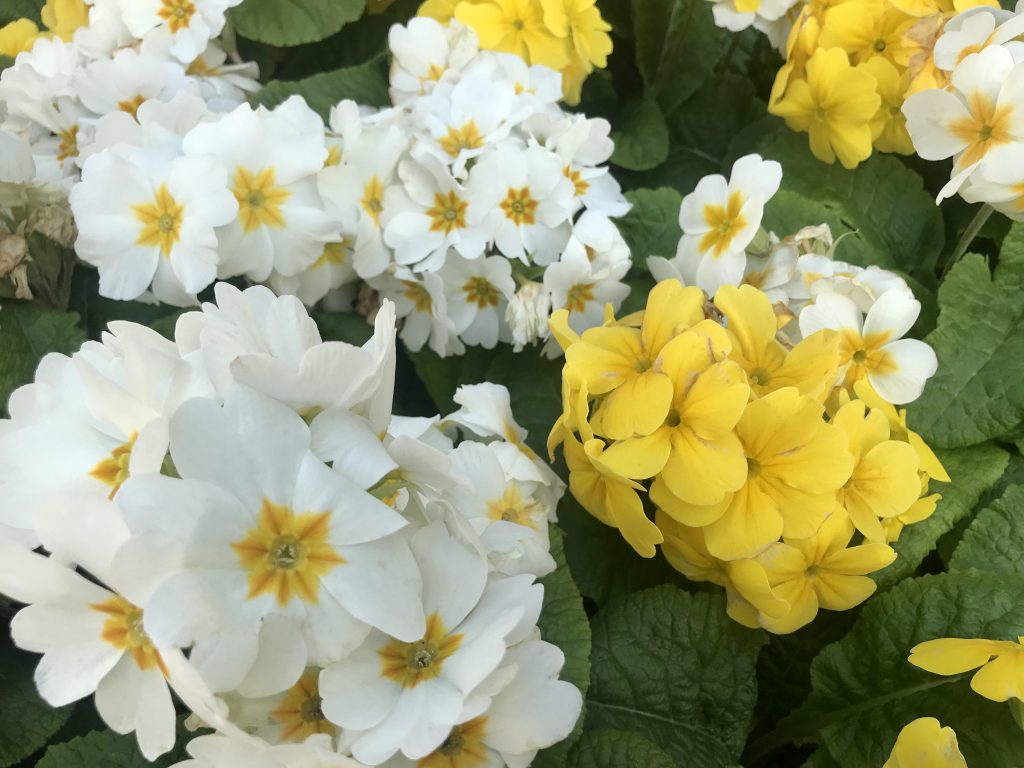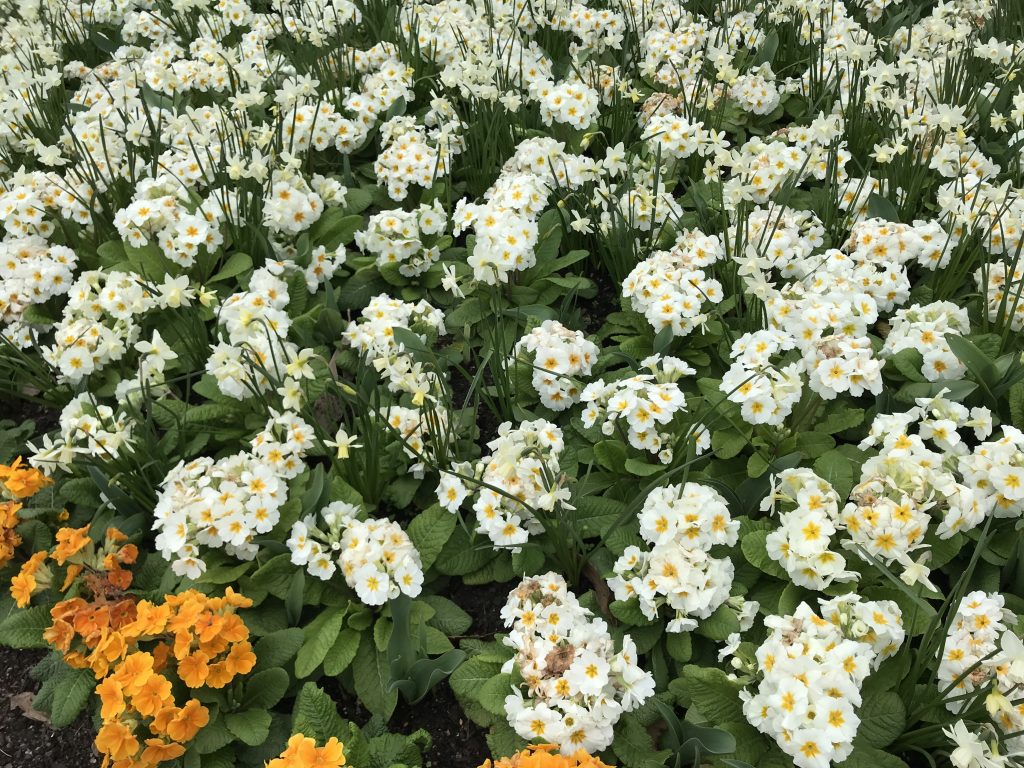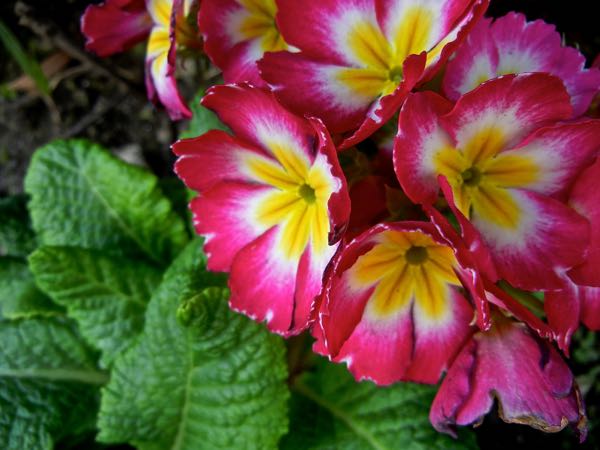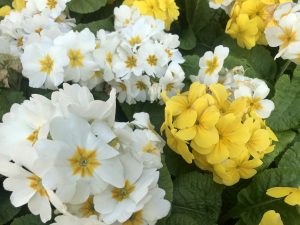Primula vulgaris: Exploring the Charms of the Common Primrose
Primula vulgaris, commonly known as the Common Primrose, is a delightful herbaceous semi-evergreen perennial. that belongs to the Primulaceae family of plants. With its wide range of common names, including Primrose, Blue Primrose, Culver Keys, Primula acaulis, Primula grandiflora, Primula uniflora ‘Gmelin’, and Primula Vernalis, this enchanting flower captures the hearts of gardeners worldwide. They grow Primula vulgaris primarily as a biennial, and its vibrant blooms herald the arrival of spring with their captivating colors.
Flowering Beauty and Reproductive Adaptations:
The blossoms of Primula vulgaris paint the landscape with hues of yellow, white, and pink, creating a symphony of colors that beckons the arrival of spring. These hermaphroditic flowers exhibit a unique reproductive adaptation known as heterostyly. Within a single Primula vulgaris population, there are two distinct flower types: “pin” and “thrum.” To ensure successful fertilization, it is necessary to have two plants, each bearing flowers of different types, allowing for cross-pollination between the pin and thrum flowers.
Versatile Uses in the Garden: Primula vulgaris finds its place in various garden settings, offering versatility and charm. It thrives in containers, adding a burst of color to patios, balconies, and window boxes. Additionally, its low-growing nature, reaching a height of approximately 10 to 30 centimeters or 4 to 12 inches, makes it an excellent choice for bedding displays and border plantings. Whether adorning a formal garden or a whimsical cottage garden, Primula vulgaris brings a touch of natural beauty and grace.
Native Habitat and Distribution: Primula vulgaris is native to southern and western Europe, northwest Africa, and southwest Asia. Its natural habitat spans across these regions, where it graces meadows, woodlands, and damp areas with its enchanting presence. Its adaptability and widespread distribution are testaments to its resilience and enduring appeal.
Celebrate the arrival of spring with its captivating colors, and appreciate its unique reproductive adaptations that contribute to the diversity of nature. Whether adorning containers, borders, or bedding displays, Primula vulgaris applies its undeniable charm and versatility, creating an atmosphere of natural splendor.

Cultivation Guidelines for Primula vulgaris:
To cultivate Primula vulgaris and revel in its captivating blooms, follow these guidelines:
Sunlight and Soil Requirements: Primula vulgaris thrives in both sunlit and partially shaded areas. When selecting a planting location, ensure the soil is moist but well-drained. A fertile soil enriched with organic matter promotes healthy growth and abundant flowering.
Propagation and Maintenance: Propogate Primula vulgaris through seeds or basal cuttings. Sow the seeds in a well-prepared seedbed or individual pots, providing them with the appropriate conditions for germination. Basal cuttings taken in late summer or early autumn can also yield new plants. Regular watering and mulching help maintain soil moisture levels and support the plant’s overall health.
Pest and Disease Management: While Primula vulgaris is generally a resilient plant, it may encounter various pests and diseases. Keep an eye out for aphids, leaf and bud eelworms, leaf-mining flies, vine weevils, slugs, red spider mites, and grey molds. Implement appropriate pest management practices, such as regular monitoring, natural predators, and targeted treatments, to ensure the health and vigor of the plants.
Medicinal and Cultural Significance: Beyond its ornamental value, Primula vulgaris holds cultural significance and has been utilized in traditional medicine. In certain regions, they call it by names such as Culver Keys, which refers to the plant’s historical use as a remedy for ailments related to the respiratory system. The medicinal properties of Primula vulgaris have been valued for generations, highlighting its enduring cultural importance.
Embrace the Beauty of Primula vulgaris:
Allow yourself to be captivated by the enchanting beauty of Primula vulgaris as it graces your garden with its vibrant blooms and delicate presence. Celebrate the arrival of spring as this magnificent flower reveals its captivating colors, infusing your outdoor space with a sense of joy and renewal. Whether showcased in containers, borders, or bedding displays, Primula vulgaris adds a touch of elegance and natural allure to any setting.
Conclusion: Primula vulgaris, known by various names such as Common Primrose, Blue Primrose, and Culver Keys, is a remarkable herbaceous perennial that enchants with its vibrant blooms and cultural significance. From its heterostylous flowers to its adaptability in different garden settings, this versatile plant brings beauty and charm to landscapes. Embrace the allure of Primula vulgaris, celebrating its resilience, aesthetic appeal, and historical significance in both traditional medicine and garden design.


Also, read about Primula bulleyana.


